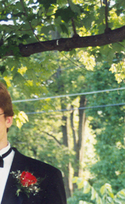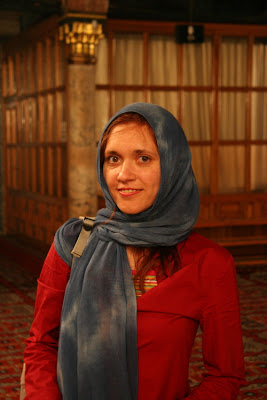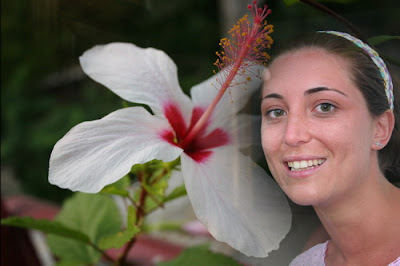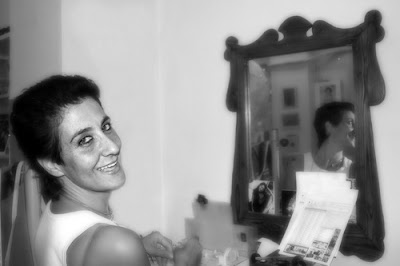Wednesday, 5 December 2007
Bokeh (from the Japanese boke ぼけ, "blur") is a photographic term referring to the appearance of out-of-focus areas in an image produced by a camera lens.[1] Different lens bokeh produces different aesthetic qualities in out-of-focus backgrounds, which are often used to reduce distractions and emphasize the primary subject. The effect itself is the circle of confusion, an image of the aperture convolved by the image itself.
Origin
Mike Johnston, former editor of Photo Techniques magazine, claims to have coined the bokeh spelling to suggest the correct pronunciation to English speakers,[2] replacing the previous spelling boke that derived directly from the Japanese word for "fuzzy" and had been in use at least since 1996.[3]
The term bokeh has appeared in photography books at least since 2000
Description
Although difficult to quantify, some lenses enhance overall image quality by producing more subjectively pleasing out-of-focus areas, referred to as bokeh. Bokeh is especially important for large-aperture lenses, macro lenses, and long telephoto lenses because they are typically used with a shallow depth of field. Bokeh is also important for "portrait lenses" (typically medium telephoto — 85–150 mm on 35-mm format) because the photographer would typically select a shallow depth of field (wide aperture) to achieve an out of focus background and make the subject stand out.
Bokeh characteristics may be quantified by examining the image's circle of confusion. In out-of-focus areas, each point of light becomes a disc. Depending how a lens is corrected for spherical aberration, the disc may be uniformly illuminated, brighter near the edge, or brighter near the center. Lenses that are poorly corrected for spherical aberration will show one kind of disc for out-of-focus points in front of the plane of focus, and a different kind for points behind. This may actually be desirable, as blur circles that are dimmer near the edges produce less-defined shapes which blend smoothly with the surrounding image. Lens manufacturers including Nikon and Minolta make lenses designed with specific controls to change the rendering of the out-of-focus areas. These lenses include the Nikkor 105mm f/2, Nikkor 135mm f/2 and the Minolta, now Sony 135mm STF.
The shape of the aperture is commonly believed to have a great influence on the subjective quality of bokeh. When a lens is stopped down to something other than its maximum aperture size (minimum f-number), out-of-focus points are blurred into the polygonal shape of the aperture rather than perfect circles. However, this is only apparent when a lens produces undesirable, hard-edged bokeh. Some lenses have aperture blades with curved edges to make the aperture more closely approximate a circle rather than a polygon. Lens designers can also increase the number of blades to achieve the same effect. Canon's EF 85mm f/1.2L II lens (often used for portraits) is an example of an almost circular aperture diaphragm.
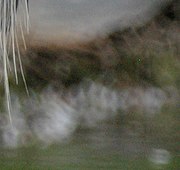
Bokeh can be approximated by convolving an image with a circular box blur kernel. In general, a particular look can be achieved by convolving with a kernel corresponding to the image of an out-of-focus point source taken with a real camera. (Diffraction optics may alter the effective shape of the blur.)
The other characteristics of a lens that cause it to produce pleasing bokeh are complex. Some lens designs are known to produce a certain kind of bokeh, but most photographers do not fully understand how the lens design influences bokeh; they merely note whether a lens produces results that please them. For example, mirror lenses produce a "doughnut" bokeh that is generally considered unpleasant.
See also
- Circle of confusion
- Airy disk
- Aberration in optical systems
- Special effect
- Soft focus
- Kim Kirkpatrick a photographer known for his creative use of bokeh
Labels: dictionary
Monday, 3 December 2007
Alfred Eisenstaedt - sailor kissing a nurse in Times Square on V-J Day in 1945
0 comments Posted by Spiros at 21:10
Unlike the Doisneau photo, the Eisenstaedt kiss does not appear to have been staged.
Labels: Masters of photography

This picture by Robert Doisneau is perhaps one of the best known images in photography and one of the best selling ones as well.
Would you believe it that it was not a snapshot but it was staged? And there was a huge case with people claiming to be the kissers and asking for money
Another famous image of a kiss is Robert Doisneau’s “The Kiss by the Hôtel de Ville,” taken on a Parisian street in 1950. Alas, the image — considered one of the most romantic ever taken and widely reproduced since 1986, when it was first printed as a poster — has a less happy story. As Hélène Fouquet reported, in 1993, a former actress, Françoise Bornet, emerged from anonymity when she sued Doisneau for $18,000 and a share of the royalty in the image. The case was dismissed, but during the proceedings Doisneau revealed that the scene had been staged. Doisneau died in 1994. Ms. Bornet sold her original print of the photograph for $242,000 at an auction; the rights remained with Doisneau’s agency.
Source
Labels: Masters of photography
Saturday, 1 December 2007
I took these pictures in Market Street, Manchester (just outside the Arndale centre), summer 2007.
I just stood and watched gaping as this old geezer sat and played the flute for a prolonged period of time without wasting a single puff of his cigarette. I thought it not only redefines the concept of addiction, but the concept of avarice.
Pity I only had my mobile phone with me and the quality of the pictures is not that good.
Labels: fun
Friday, 30 November 2007
Labels: self-portraits
Labels: portraits
Labels: portraits
I find this picture funny in a weird sort of way as it draws indirect parallels between the work of art and the woman. From an exhibition of the students of Vakalo - School of Art & Design.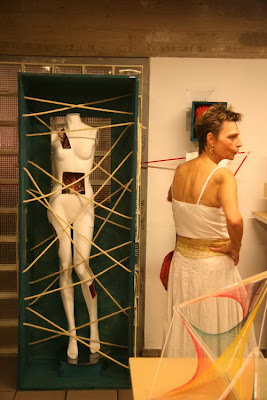
Labels: portraits
Labels: portraits
Thursday, 29 November 2007
Taken in Koh Samui, Thailand. Very slow speeds were used (2-3 seconds) and the camera was hand-held.
Labels: night
The poetry of night scenery in the quiet beach of Maenam, Koh Samui
0 comments Posted by Spiros at 04:40Labels: night
An impressive phallic rock formation in Koh Samui, Thailand with some extra... jizz. A truly orgasmic experience.
Labels: fun, landscapes
Labels: portraits
This is from Doi Ithanon temple in Northern Thailand. I loved those big round balls and the long straight shaft in the middle and I played with them.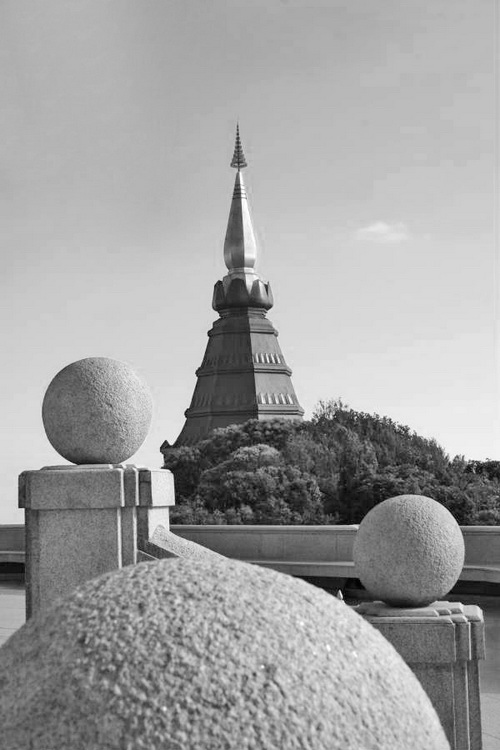
Labels: architecture
Who says elephants are not good at basketball? Even Michael Jordan would envy this lay up. Taken in Koh Samui, Thailand where elephants have their own local basket ball league.
Labels: animals
Colouring and distorting the photograph using various filters and effects.
Labels: still life
Two faces, two cigarettes, two angles and playing with depth of field
0 comments Posted by Spiros at 04:14Shooting photographer Andreas Katsikoudis and Ioanna in a playful photosequence.
Labels: portraits
There are portraits of my friend, artist, architect and interior designer Manolis Iliakis.
The one that personally moves me more than any other, is the one shot in a church, where the spiritual qualities of the model are quite successfully emphasized through the gaze and the warm colours: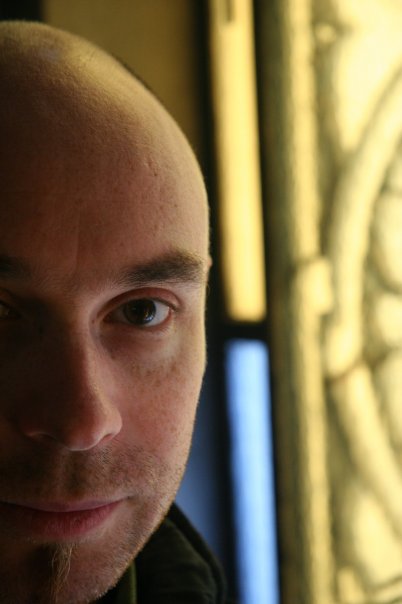
Labels: portraits
From a fashion show at Booze 9/12/2005 by Poupée (Χριστίνα Μαθέα).
My absolute favourite is the following picture:
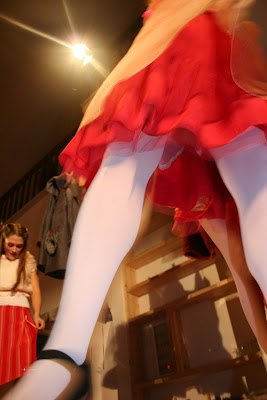
Labels: fashion, Stella Pefani, Στέλλα Πεφάνη, Χριστίνα Μαθέα
These are some photographs I took at Dimitris Dasssios' brilliant show held at Zappeio area and part of the 4th Hellenic Fashion Week Show - October 2006. I must confess I really liked the clothes, the models and the whole presentation. One of the best shows I have ever been to.
Labels: fashion
Wednesday, 28 November 2007
Photography exhibition of post-war Greece in Brazil entitled "Cars 1944-1964"
0 comments Posted by Spiros at 02:29
Μια φωτογραφική διαδρομή της μεταπολεμικής Ελλάδας με πρωταγωνιστή το αυτοκίνητο παρουσιάζεται από τις 3 έως τις 31 Δεκεμβρίου 2007 στο «National Theater – Athos Bulcao Gallery» στη Βραζιλία.
Η απελευθέρωση, τα Δεκεμβριανά, ο εμφύλιος, οι πρώτες προσπάθειες για την αποκατάσταση του κατεστραμμένου από τον πόλεμο συγκοινωνιακού δικτύου της χώρας, καθώς και προσωπικότητες και αρχηγοί κρατών που κινούνται με αυτοκίνητα στους δρόμους της Αθήνας παρουσιάζονται στις 55 φωτογραφίες τις έκθεσης που έχει τίτλο «Αυτοκίνητα 1944-1964».
Οι Βραζιλιάνοι θα έχουν την ευκαιρία να θαυμάσουν θέματα τόσο διαφορετικά όπως συλλαλητήρια, νικήτριες καλλιστείων, το Ράλι Ακρόπολις, η επιστροφή του αρχιεπισκόπου Μακαρίου από τις Σεϋχέλλες, η Ford που σκότωσε τον Στέφανο Σαράφη, η περιφορά της εικόνας του «Αξιον Εστί» με μια ανοιχτή Plymouth στους δρόμους της Αθήνας, τα οποία έχουν ως κοινό παρονομαστή τους «τέσσερις τροχούς» ενός οχήματος.
Πρόκειται για μια παραγωγή του Μουσείου Φωτογραφίας Θεσσαλονίκης που παρουσιάζεται στο πλαίσιο του φεστιβάλ φωτογραφίας Foto Arte Brasilia.
Οι φωτογραφίες της έκθεσης, των Ευριπίδη Μάρτογλου, Δημήτρη Τριανταφύλλου, Δημήτρη Φλώρου και Δημήτρη Φωτεινόπουλου, προέρχονται από μέρος του αρχείου του πρακτορείου των «Ηνωμένων Φωτορεπόρτερ», το οποίο ανήκει στον Νίκο Ε. Τόλη.
Labels: exhibitions
Thursday, 22 November 2007
Greek Libraries
- Ίδρυμα Ευγενίδου - It has photography books which you can borrow
Greek Photography portals and communities
Greek Photography magazines
Greek Photographers
Tutorials
- Cambridge in Colour - Digital Photography Tutorials
- Digital Photography School — Digital Photography Tips for You
- 90+ Online Photography Tools and Resources
- High Dynamic Range (HDR) Photography in Photoshop CS2
- Bernie's Better Beginner's Guide to Photography
Photoshop tutorials
- Photoshop Tutorials - Diffusion
- Photoshop Tips & Tricks
- Digital Photography World: CORRECTING CHROMATIC ABBERATIONS
- Photoshop Video Tutorial: Fix Harsh Lighting of Pictures
Photography portals and stock photos
- stock.xchng - the leading free stock photography site
- Corbis Ψ stock photography and pictures
- Image Source royalty free photography
- Open Photo Project
- deviantART: where ART meets application!
- Digital Camera Reviews and News: Digital Photography Review: Forums, FAQ
- Fredmiranda - photography portal and reviews
Labels: photography links
Tuesday, 13 November 2007
There is a big debate going on as what is better. I am sure that most high-end DSLRs (of 8 megapixels or above) give on the whole much better results than 35mm films in most areas. Below you can fins some links which explore this issue further
Links
Wednesday, 7 November 2007
Σεμινάριο φωτογραφίας με θέμα την “ανθρώπινη παρουσία στη φωτογραφική εικόνα” από τον Γιώργο Δεπόλλα
0 comments Posted by Spiros at 01:54Σεμινάριο φωτογραφίας με θέμα την “ανθρώπινη παρουσία στη φωτογραφική εικόνα” από τον Γιώργο Δεπόλλα
Tο σεμινάριο αποτελείται από δύο μέρη, το πρώτο περιλαμβάνει ανάλυση του θέματος με προβολές και σχόλια πάνω στη δουλειά Ξένων και Ελλήνων φωτογράφων.
Το δεύτερο περιλαμβάνει ενημέρωση και καθοδήγηση για την δημιουργία ενός portfolio (σχετικού με το θέμα), για όσους το επιθυμούν. Tο σεμινάριο θα γίνει σε 7 εβδομαδιαίες 3ώρες συναντήσεις κάθε Τετάρτη (6 – 9.15μμ.) στο studio του φωτογράφου.
Πρόγραμμα:
Τετάρτη 7 Νοεμβρίου 2007 – Εισαγωγή και ιστορική διαδρομή.
Τετάρτη 14 Νοεμβρίου 2007 – Φωτογραφικό πορτραίτο.
Τετάρτη 21 Νοεμβρίου 2007 – Φωτογραφικό στιγμιότυπο.
Τετάρτη 28 Νοεμβρίου 2007 – Σκηνοθετημένη φωτογραφία.
Τετάρτη 5 Δεκεμβρίου 2007 – Προϋποθέσεις και κατευθύνσεις για τη δημιουργία portfolio.
Τετάρτη 12 Δεκεμβρίου 2007 – Συζήτηση και προτάσεις για την υλοποίηση portfolio.
Τετάρτη 16 Ιανουαρίου 2008 – Κριτική και ανάλυση πάνω στα αποτελέσματα.
Κόστος σεμιναρίου: για το πρώτο μέρος (5 συναντήσεις)
260 ευρώ + φπα.
Και για το δεύτερο μέρος (7 συναντήσεις)
340 ευρώ + φπα.
Πληροφορίες: Τηλ: 210 3610495 Fax.: 210 3643323
E-mail: fotoview@otenet.gr
IMAGE STUDIO - Σίνα 52 – Αθήνα, 106 72
http://www.hcp.gr/gr/seminaria.html
Labels: seminars
Tuesday, 6 November 2007
Thursday, 25 October 2007
A photoblog (a.k.a. photolog or phlog) is a form of photo sharing and publishing in the format of a blog, but differentiated by the predominant use of and focus on photographs rather than text. Photoblogging (the action of posting photos to a photoblog) gained momentum in the early 2000s with the advent of the moblog and cameraphones.
Construction
There are 3 basic types of photoblogs. Photoblogs on individual domains, photoblogs on blogging services such as Blogger that were designed primarily for text content, and photoblogs on photo specific blogging services such as Fotolog or Flickr.
The dynamic nature of blogs and photoblogs compared to static sites means that blogs require some form of content management system (CMS) rather than being built by hand. These content management systems usually provide the photoblog's authors with a web service that allows the creation and management of posts and the uploading of images. The CMS delivers webpages based on the data entered by the photoblog author. Access to photoblogs is usually unrestricted and available to anyone with internet access and a browser.
Some existing blogging CMS have been modified by the use of add-ons/plugins (and sometimes core code rewriting) to enable the transistion from text blogging to photoblogging. As an example, a photoblog author might limit his blog to display a single entry per day (as opposed to several entries which is typical for text blogs) and he might put thumbnails in entry excepts to provide archives that display images instead of text snippets. Over time, developers have begun to write purpose-built CMS just for creating photoblogs. Additionally many services specializing in hosting and displaying images such as flickr and fotolog have APIs that allow other blogging systems to display their images giving the user many options as to the construction of a particular site.
The early days of photoblogging required some level of technical experience with setting up a webserver and installing or writing the CMS code for it (e.g. Pixelpost). Many photobloggers still prefer this option of running their own server, as this gives them full control over the display and functionality of their photoblog. However, there are now a range of photoblog hosting services available which provide ready made photoblogs in which everything has already been setup. This has made photoblogging more accessible to the layman.
See also
External links
- Photoblogs at the Open Directory
[From Wikipedia]
Labels: dictionary
You want a photoblog? Start by registering at blogger. Then, there is a number of different ways you can add images or even slideshows.
Add an image at Blogger First you create a new post and then you use the add image button to add an image from your PC or from the web.
First you create a new post and then you use the add image button to add an image from your PC or from the web.
Picasa
Picasa is a great program which lets you organize and edit your pics on your PC and even publish them on the web, your web site or your blog! You have a 1 Gb space allowance for your pictures. You can click on an image on your picasa album and then click on Link to this Photo. It will display a link to paste on your blog (HTML to embed in website).
You can click on an image on your picasa album and then click on Link to this Photo. It will display a link to paste on your blog (HTML to embed in website).
From the album index you can select Embed Slideshow and this will create the code for a slide show of all the album's images which you can paste to your blog.
Labels: software
I was just walking down Panepistimiou street (central Athens) at about 00.10 Thursday, 25 October and I witnessed a kiosk on fire. The copper was not very keen on me approaching further, as the firemen were on their way. Pity I only had my mobile phone with me.

Labels: reportage
Categories
- animals (1)
- architecture (1)
- creative (1)
- depth of field (1)
- dictionary (2)
- exhibitions (6)
- fashion (2)
- flowers (1)
- fun (4)
- landscapes (1)
- Masters of photography (4)
- monuments (2)
- night (2)
- nude (3)
- photography links (1)
- portraits (19)
- reportage (1)
- self-portraits (4)
- seminars (3)
- software (1)
- Stella Pefani (2)
- still life (1)
- stroboscopic (1)
- women (1)
- Στέλλα Πεφάνη (2)
- Χριστίνα Μαθέα (1)
Blog Archive
-
▼
2007
(31)
-
►
November
(24)
- Man lying on a beach and girl on top
- Portrait of a Romanian girl in a mosque in Istanbul
- Portrait of a Turkish girl in a mosque in Istanbul
- Woman pursing lips and modern art plastic figure
- Portrait of a beautiful girl with flower layer
- Portrait of a woman and mirror
- A man playing with lights at night
- The poetry of night scenery in the quiet beach of ...
- A phallic rock formation in Koh Samui (Grandfather...
- Monks in Thailand
- Thai monks watching a parade.
- Doi Ithanon temple in Northern Thailand
- An elephant playing basketball
- Being naughty with the Buddhas in Sukothai
- A study on an old clock, shells and autumn leaves
- Two faces, two cigarettes, two angles and playing ...
- Portraits of an architect - Manolis Iliakis
- Fashion show at Booze by Poupée (Χριστίνα Μαθέα)
- Pictures from a fashion show by Dimitris Dassios
- Photography exhibition of post-war Greece in Brazi...
- Photography links
- Analog versus digital photography
- Σεμινάριο φωτογραφίας με θέμα την “ανθρώπινη παρου...
- Art composition collage
-
►
November
(24)
